27 Stunning Wainscoting Panel Ideas to Transform Your Home’s Interior
Wainscoting adds instant charm and character to any space, elevating plain walls into architectural features.
Whether you’re going for classic elegance or modern flair, these paneling ideas can completely transform your home’s aesthetic.
You don’t need to be an interior design expert to appreciate how wainscoting can define spaces and add dimension.
From traditional beadboard to contemporary geometric patterns, there’s a wainscoting style for every taste and budget.
Ready to add some architectural interest to your walls? Let’s explore these 27 wainscoting ideas that will inspire your next home improvement project.
1: Classic Beadboard Wainscoting

Beadboard offers timeless appeal with its vertical slats and distinctive grooves. This style works beautifully in bathrooms, kitchens, and hallways where you want a casual cottage feel.
The narrow vertical panels create visual height in smaller spaces. Paint it crisp white for a traditional look or go bold with a contrasting color to make a statement.
2: Raised Panel Traditional Style

Raised panel wainscoting brings formal elegance to dining rooms and living areas.
These panels feature a beveled edge that creates depth and shadow, lending sophistication to your walls.
This style pays homage to colonial architecture and pairs wonderfully with traditional furniture. Consider painting it in soft neutrals or heritage colors for an authentic period look.
3: Flat Panel Modern Approach

For a contemporary twist, flat panel wainscoting offers clean lines and minimal detailing. This streamlined style complements modern décor while still adding architectural interest.
You can customize the panel width to suit your space. Keep it simple with monochromatic color schemes or add drama with dark, moody tones against lighter walls above.
4: Board and Batten Farmhouse Charm

Board and batten combines wide boards with narrow wooden strips (battens) for a farmhouse-inspired look.
This dimensional style creates striking vertical lines that draw the eye upward.
The rustic yet refined appearance works in entryways, dining rooms, and bedrooms. It’s also one of the more DIY-friendly wainscoting styles, making it perfect for weekend warriors.
5: Picture Frame Wainscoting

Picture frame wainscoting features rectangular or square frames applied directly to the wall. This versatile style can be adapted to suit both traditional and transitional homes.
You can customize the size and spacing of frames to fit your room’s proportions. It’s particularly striking when painted in a contrasting color to your upper walls.
6: Shiplap Horizontal Appeal

Shiplap creates a casual, coastal vibe with its horizontal boards that slightly overlap. This laid-back style has gained enormous popularity thanks to farmhouse design trends.
The horizontal orientation visually expands your space, making narrow rooms appear wider. Consider whitewashed or natural wood finishes for an authentic beach house aesthetic.
7: Two-Tone Color Blocking

Create visual interest by painting your wainscoting a different color than the wall above. This two-tone approach defines the architecture while adding designer flair to your space.
Try pairing dark wainscoting with lighter upper walls for dramatic contrast. Or reverse it with light panels against a deeper hue above for unexpected sophistication.
8: Full Wall Paneling

Take wainscoting to new heights by extending panels all the way to the ceiling.
This bold approach creates a luxurious, enveloping feeling, particularly effective in formal dining rooms.
Full wall paneling works wonderfully in rooms with high ceilings.
Add a chair rail or picture rail midway for traditional distinction while maintaining the dramatic full-height effect.
9: Recessed Panel Classic Style

Recessed panels create subtle shadow lines for understated elegance.
This versatile style features a flat center panel surrounded by raised molding, creating dimensional interest.
The balanced proportions suit formal spaces like dining rooms and libraries.
Consider painting the recessed areas a slightly darker shade than the raised edges for enhanced depth.
10: Diamond Pattern Wainscoting

For a truly distinctive look, consider diamond pattern wainscoting. This eye-catching geometric design adds unexpected visual texture to otherwise ordinary walls.
The diagonal lines create movement and energy in your space. This style works particularly well in powder rooms or dining areas where you want to make a design statement.
11: Arts and Crafts Wainscoting

Inspired by the Arts and Crafts movement, this style features simple, straight lines with minimal ornamentation. The focus is on quality craftsmanship and natural materials.
This unpretentious design pairs beautifully with mission-style furniture. Choose stained wood rather than paint to highlight the natural beauty of the material.
12: Tongue and Groove Simplicity

Tongue and groove panels interlock for a seamless, gap-free installation. This straightforward style offers clean lines with subtle groove details between each board.
The vertical orientation elongates walls and adds character without overwhelming your space.
It’s particularly suited to coastal or cottage-style homes but adapts well to contemporary settings too.
13: Applied Molding Designs

Create custom patterns by applying decorative molding directly to flat walls. This approach allows for endless creativity—from simple geometric shapes to elaborate designs.
You can design patterns that complement your home’s architectural style. This method is also budget-friendly as it requires less wood than full panel wainscoting.
14: Half-Wall Height Wainscoting

The classic approach places wainscoting at approximately one-third of your wall height.
This traditional proportion creates balance while protecting walls from chair damage.
This height works well in dining rooms, hallways, and living areas. Finish with a substantial chair rail to create a polished transition to the upper wall.
15: Three-Quarter Height Drama

For more dramatic impact, extend your wainscoting to three-quarter wall height.
This unexpected proportion makes ceilings appear higher while creating a cozy, enveloped feeling.
This height works beautifully in dining rooms and studies. The taller panels create an impressive backdrop for furniture pieces while maintaining proper proportion.
16: Curved Wainscoting for Arches

Don’t let curved walls deter you—wainscoting can be adapted to follow architectural curves. This specialized application adds refined detail to curved staircases and archways.
The curved panels highlight unique architectural features. While more challenging to install, the results are truly spectacular and showcase fine craftsmanship.
17: Mixed Material Combinations

Combine wainscoting with other materials like wallpaper, textured plaster, or even tile for unique dimension. This contemporary approach creates unexpected material contrasts.
Try pairing simple panel wainscoting with boldly patterned wallpaper above. The solid lower portion balances the visual weight of busier patterns on upper walls.
18: Painted Pattern Wainscoting

Add visual interest by painting patterns directly onto flat panel wainscoting. This technique creates the look of intricate millwork without the expense or installation complexity.
Geometric designs work particularly well for this application. Use painter’s tape to create clean lines, then apply contrasting paint colors for a custom designer look.
19: Weathered Wood Finish

For rustic charm, consider wainscoting with a weathered or distressed finish. This lived-in look adds character and warmth to contemporary spaces that might otherwise feel sterile.
Reclaimed wood makes an excellent eco-friendly option. The patina of age gives each panel unique character that can’t be replicated with new materials.
20: Painted Brick Wainscoting

For industrial-inspired spaces, consider a half wall of painted brick as an unconventional wainscoting alternative. This textural approach adds rugged character to modern interiors.
The textured surface creates interesting shadow play. Top with a simple wood shelf as a chair rail for a finished look that bridges rustic and refined.
21: Contemporary Geometric Panels

Break away from traditional rectangular panels with contemporary geometric designs. Angular patterns create visual movement and unexpected modernist flair.
These statement-making panels become the focal point of your room. Keep the rest of your décor simple to let the architectural details take center stage.
22: Upholstered Wainscoting

For ultimate luxury, consider upholstered panels as wainscoting in bedrooms or dining rooms.
Fabric-covered panels add warmth, texture, and sound absorption to your space.
Button-tufted panels create a sumptuous headboard effect when used behind beds.
In dining rooms, they provide comfortable back support for diners seated along banquettes.
23: Metal Accent Wainscoting

Incorporate metal accents within traditional wood wainscoting for an unexpected industrial twist. Brass, copper, or blackened steel elements create striking contemporary contrast.
Try metal corner details or inlaid strips between panels. This modern interpretation of classical paneling works beautifully in transitional spaces that blend old and new.
24: Rattan or Cane Inserts

For tropical or bohemian spaces, consider wainscoting with rattan or cane inserts. These natural materials add organic texture and visual interest to your walls.
The woven panels create beautiful shadow patterns when backlit. This style pairs wonderfully with natural materials and plants for a relaxed, nature-inspired aesthetic.
25: Built-In Shelf Wainscoting

Combine function with beauty by incorporating shallow display shelves into your wainscoting design.
This clever approach provides space for art objects or small collections.
The recessed areas between panels become perfect display niches.
This works especially well in hallways, dining rooms, or living areas where you want to showcase treasured items.
26: Painted Gradient Effect
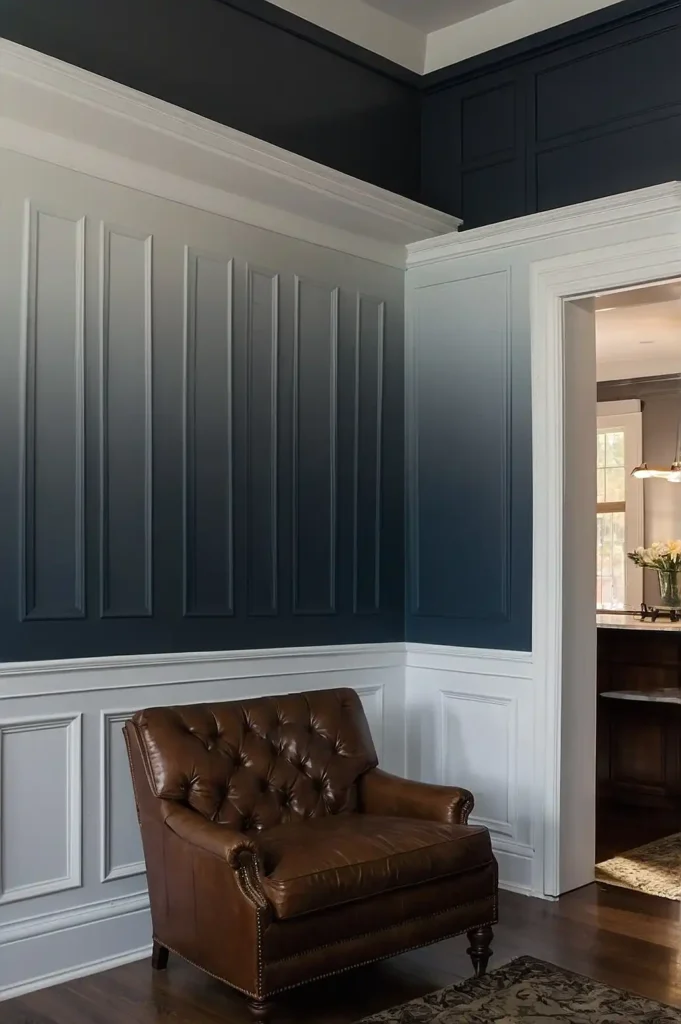
Create visual drama with a gradient paint effect on your wainscoting. This contemporary approach transitions from dark at the bottom to lighter as it moves upward.
The ombré effect adds unexpected dimension to traditional paneling. This works particularly well with monochromatic color schemes for a subtle yet impactful look.
27: Mixed Panel Sizes

Combine panels of varying sizes for a custom, collected-over-time appearance. This eclectic approach brings visual rhythm and unexpected detail to your walls.
Alternate wide and narrow panels or create a random pattern.
This unconventional approach works wonderfully in creative spaces where you want to express individuality.
Conclusion
Wainscoting offers endless possibilities to elevate your home’s interior.
Whether you prefer classic styles or contemporary interpretations, these paneling ideas can transform ordinary walls into architectural features that reflect your personal style.
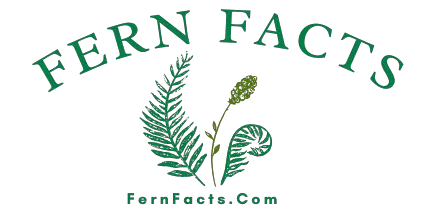

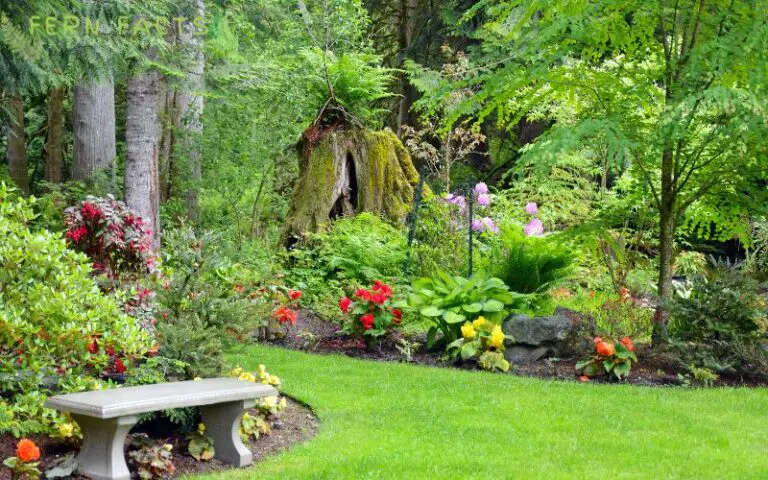
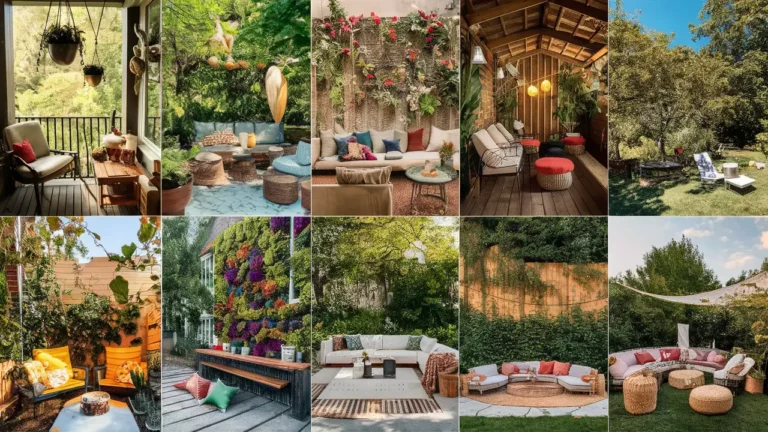


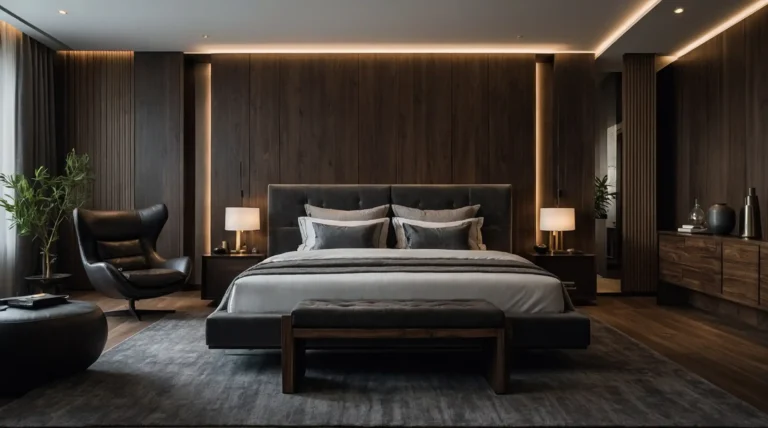
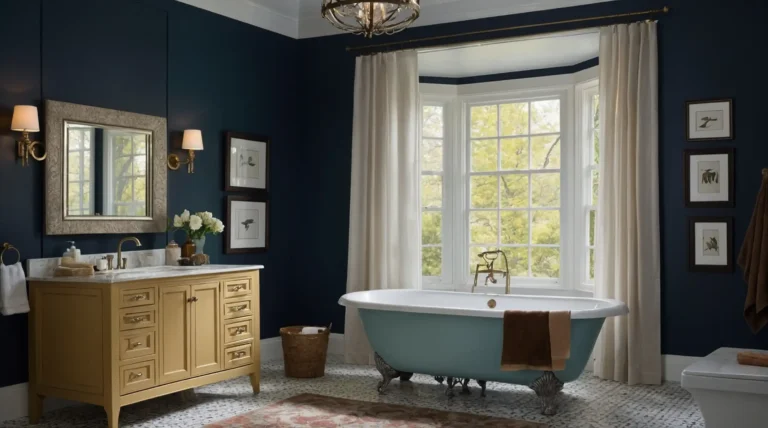
Only wanna admit that this is very helpful, Thanks for taking your time to write this.